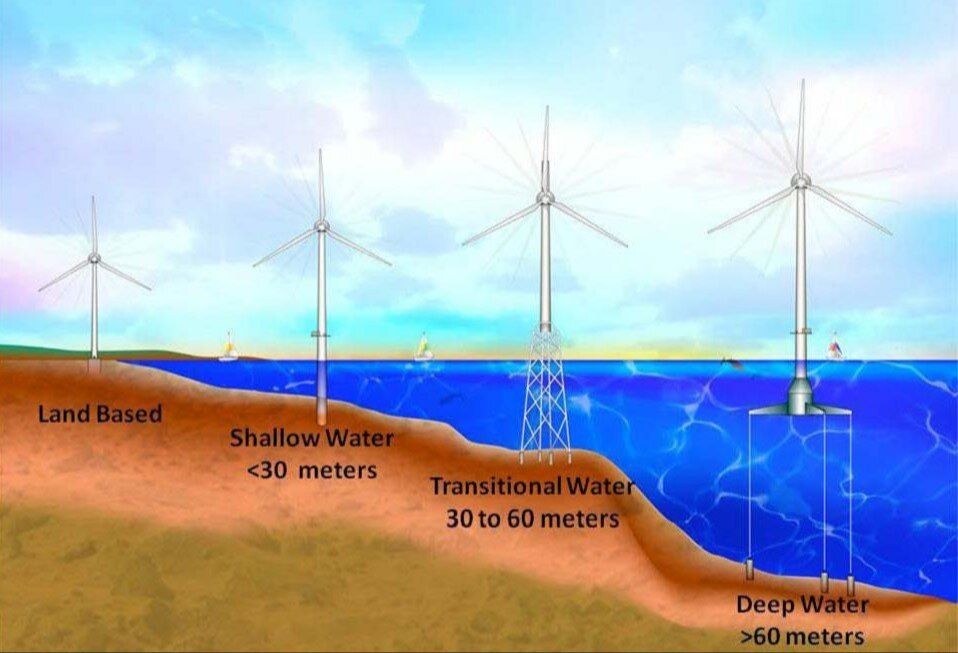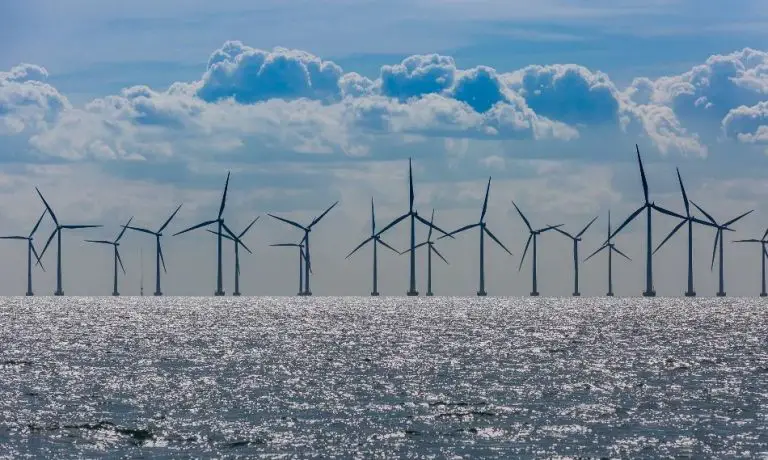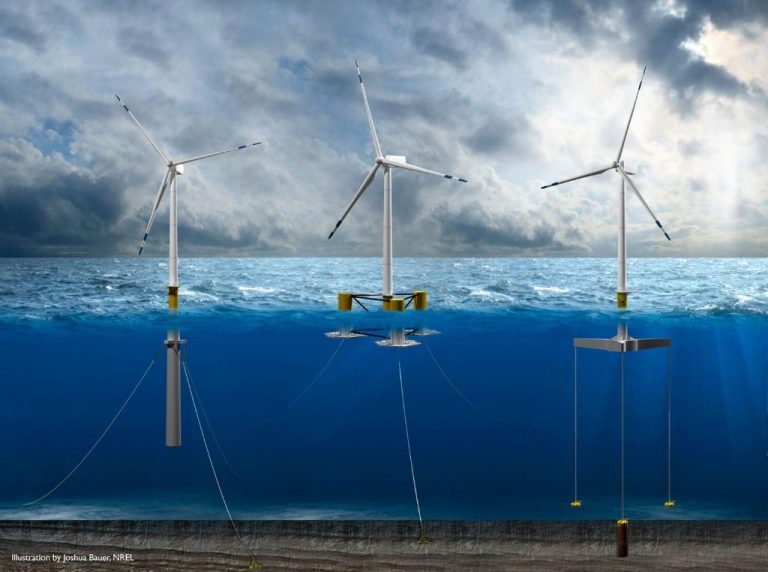Why Is Wind Energy Better Than Water Energy?

Wind energy has several advantages over hydroelectric power when it comes to cost, environmental impact, energy output, location flexibility, weather dependence, land use, public opinion, and grid integration. This article will analyze the pros and cons of wind power versus hydropower to determine why wind energy is often a better choice for energy production.
Cost
Wind energy has a lower cost per kilowatt hour (kWh) compared to hydroelectric power. The typical cost per kWh for onshore wind power ranges from $0.04-0.06, while utility-scale hydroelectric costs around $0.085 per kWh. This makes wind energy over 30% cheaper than hydroelectric when it comes to generating electricity.
There are a few reasons why wind comes in cheaper:
- Wind farms are quicker and less expensive to construct than large hydro dams and reservoirs.
- Wind turbines have lower maintenance costs since they have fewer moving parts and do not require large amounts of water.
- Wind farms can be built incrementally as needed, while hydropower requires large upfront capital costs.
With the costs of wind energy declining, and hydroelectric costs remaining steady, wind’s cost advantage over hydro is likely to grow in the years ahead. This makes wind an attractive option for reliably meeting electricity demand at low prices.
Environmental Impact
Wind energy has a much lower impact on wildlife and ecosystems compared to hydropower. Wind turbines can lead to bird and bat deaths if placed in migration pathways, but do not fundamentally alter ecosystems or habitats like dams do. Hydroelectric dams flood large areas of land to create reservoirs, displacing species and disrupting river connectivity. According to Wang (2018), hydropower projects have resulted in biodiversity loss and habitat fragmentation. Though wind power affects some species, the overall footprint is far less destructive.
Additionally, wind power emits zero greenhouse gases or pollutants. Hydropower facilities themselves do not produce emissions when generating electricity, but the reservoirs created emit methane due to underwater vegetation breakdown. Per Environment Co (2018), this methane can have over 20 times the heat-trapping capacity of carbon dioxide. So while hydropower is considered low-emission, reservoirs contribute substantially to greenhouse gas emissions.
Overall, wind power’s localized effects on species are outweighed by hydropower’s large-scale impacts on entire ecosystems through habitat destruction and emissions. Wind is considered one of the most environmentally friendly energy sources compared to other renewables like hydropower.
Energy Output
Wind energy has the potential to produce more total energy globally than hydroelectric power. According to a study by the International Energy Agency (IEA), the worldwide technical potential for wind energy capacity is over 400,000 TWh per year, compared to just 16,000 TWh per year for hydropower (Source 1). While not all of that potential can necessarily be utilized due to geographic constraints, it demonstrates the immense scalability of wind power.
Wind turbines can also maximize energy production on a given area of land compared to hydroelectric dams and reservoirs. The same land area occupied by a hydro dam could likely generate over 5 times more power using wind turbines instead (Source 2). This greater power density allows wind farms to produce more total energy even when space is limited.
In summary, wind energy has much higher technical potential globally and can generate more electricity per unit of land area, enabling it to produce more total energy than hydropower.
Location Flexibility
One advantage of wind power over hydropower is that wind farms can be built in many more locations. While hydropower requires the construction of dams on rivers with adequate flow and drop in elevation, wind turbines can be erected in plains, hills, offshore, and even urban areas (Agbonaye, 2022; Langer et al., 2023). This greater siting flexibility for wind means more geographic regions can potentially utilize it. With careful planning around wildlife habitats, wind power can take advantage of the wide-open spaces across continents. In contrast, suitable dam sites are rarer, constraining hydropower’s growth.
Weather Dependence
One key difference between hydroelectric power and wind power is their dependence on weather patterns. Hydroelectric dams rely on precipitation and rainfall within their watersheds to replenish the reservoirs that fuel hydroelectric turbines. During periods of drought, hydroelectric output can drop substantially if reservoir levels fall too low. For example, during California’s recent multi-year drought, hydroelectric generation fell by more than 50% compared to average years (https://windcycle.energy/comparison-of-hydro-and-wind-power-technologies/).
In contrast, wind patterns tend to be more consistent from year to year. While wind speeds at any given site may vary daily or seasonally, overall wind resources across broad geographies remain fairly steady. This allows wind farms to provide more reliable power outputs compared to precipitation-dependent hydropower facilities. Wind power can act as a hedge against drought risks that periodically decrease hydroelectric generation (https://environment.co/hydroelectric-vs-wind-power-what-offshore-energy-should-we-invest-in/).
Land Use
Wind energy has a lower overall land use footprint compared to hydroelectric power. While wind turbines themselves take up space, the land in between and around the turbines can still be utilized for other purposes like agriculture or grazing. According to one analysis, wind energy requires about 1 acre per megawatt of capacity whereas hydropower reservoirs require around 3-5 acres per megawatt on average [1]. This is because hydroelectric dams and their reservoirs flood large areas of land that cannot be used for other productive purposes. Though the dam structure itself may have a small footprint, the area flooded behind the dam is often substantial. Wind turbines, on the other hand, have a relatively minimal land use impact beyond the turbine towers and access roads.
Public Opinion
Public opinion polls show that wind energy enjoys broader support compared to hydroelectric power. A 2021 Pew Research Center survey found that 77% of U.S. adults favor expanding wind power, while only 49% support more hydroelectric power dams. Wind energy is seen as a cleaner and more sustainable source by the general public. According to Pew polls in 2016 and 2021, support for wind power has remained high and stable over time, while support for hydroelectric dams has declined. Some key reasons that contribute to wind energy’s broader public appeal include its positive environmental image and innovation factor.
Sources:
Grid Integration
Wind and hydroelectric power complement each other well on the electrical grid. As the GE report “This Unique Combo Of Wind And Hydro Power Could Revolutionize Renewable Energy” explains, “The big idea here is that the wind will generate electricity when it’s, well, windy, and the water will act as a giant battery that will discharge and modulate power as it’s needed by the grid.”
The National Renewable Energy Lab (NREL) also published a report titled “Grid Integration: Hydropower’s Role in the Next-Generation Electrical Grid” which highlights how hydropower can help integrate variable wind power onto the grid by using excess wind energy to pump water uphill into reservoirs, acting as a giant storage battery. NREL states “This expertise is leveraged from our previous successes with wind and solar integration research and applied to the hydropower industry.”
According to the Department of Energy article “How Wind Energy Became Integral to the Modern Grid”, “Wind energy has joined the energy mainstream, thanks in large part to the wind integration studies funded by the Wind Energy Technologies Office.” These studies helped model and understand the impacts of significant wind power on grid reliability and operations.
Conclusion
In summary, there are several advantages that make wind energy a better renewable energy option compared to hydroelectric power. Wind energy has become more cost-effective and cheaper than hydroelectric in recent years. It also has a lower environmental impact, as hydroelectric dams can disrupt river ecosystems and habitats. While hydroelectric can generate more consistent power, wind energy output continues to improve with larger and more efficient turbines. Wind power offers greater location flexibility, since it can be generated wherever there is sufficient wind, while hydroelectric requires specific river geographies. Despite its dependence on weather conditions, wind power integrates well into electric grids with a diversified supply mix. With public support and suitable land areas, wind energy is poised to overtake hydropower as a leading renewable electricity source.




